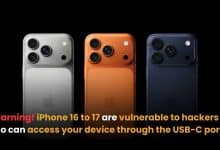Experts seek public backing for 2024 SMR nuclear plan

Energy experts urge a shift in public perception of nuclear technology to support the Energy Ministry’s push for small modular reactor (SMR) projects in the 2024 power development plan.
SMRs, defined by the International Atomic Energy Agency (IAEA) as nuclear power technology with capacities up to 300 megawatts per unit, offer about one-third of the generating capacity of traditional nuclear reactors. Their modular design allows for factory assembly and easier transportation.
Though Thai people are familiar with nuclear technology, many of them still relate it to atomic bombs or radiation leakage from nuclear power plants as said the Executive Director of Thailand Institute of Nuclear Technology, Thawatchai Onjun.
Thailand has operated a nuclear research reactor at the Office of Atoms for Peace near Kasetsart University in Bangkok for years. Onjun believes this existing familiarity should ease the process of educating the public about nuclear technology in the power sector.
Onjun made these remarks at a seminar on SMR technology, following the inclusion of SMRs in the power development plan to support the government’s carbon dioxide reduction campaign.
The new power development plan, set for implementation from 2024 to 2037, prioritises increased reliance on renewable energy. Energy officials intend to conduct a feasibility study on SMRs.
SMR-based power plant
Preparations for the SMR project should start this year, with construction of an SMR-based power plant slated to begin in 2031. According to the plan, the operational date for SMRs is targeted at approximately 2037, stated Siriwat Jedsi, Director for Power Plant Engineering at the Electricity Generating Authority of Thailand (EGAT).
The facility is projected to operate for 60 years, with development costs estimated at US$500 per kilowatt-hour, according to EGAT.
A 300-megawatt SMR requires less fuel than other types of power plants. One kilogramme of uranium can produce electricity equivalent to that generated by 100 tonnes of bituminous coal or 50 tonnes of natural gas, said Siriwat, adding that a 300-megawatt SMR requires just 12 tonnes of uranium annually.
SMRs are considered safer than traditional nuclear reactors, but the SMR project still requires a public hearing due to the contentious nature of nuclear power in Thailand, according to energy experts. Additionally, concerns exist regarding whether Thailand has sufficient nuclear technology expertise.
Chulalongkorn University’s nuclear energy expert Somboon Rassame believes the country will not face a shortage of personnel capable of managing nuclear technology. The university offers a nuclear engineering curriculum, and four classes of nuclear energy graduates have already completed the program.
Chulalongkorn University also collaborates with energy authorities on human resource development in nuclear technology.
Power generation
The Office of Atoms for Peace is preparing necessary regulations to support the installation and operation of SMRs in Thailand, stated the office’s Deputy Secretary-General, Pennapa Kanchana.
“There are currently many technologies for SMR development, and the reactors can be used for various purposes, including power generation and industrial operations, so officials need to thoroughly study them to come up with the right regulations on SMR usage.”
Presently, 18 countries are developing SMRs, and another 27, including Thailand, Indonesia, and the Philippines, are in the process of deciding on the use of SMR technology, said Dohee Hahn, an SMR platform coordinator at the IAEA’s Department of Nuclear Energy, reported Bangkok Post.
Latest Thailand News
Follow The Thaiger on Google News:


























